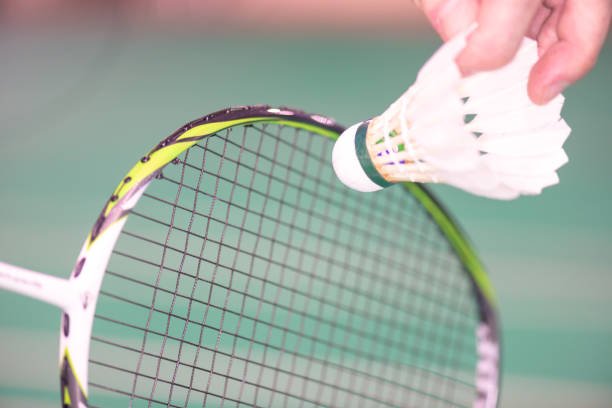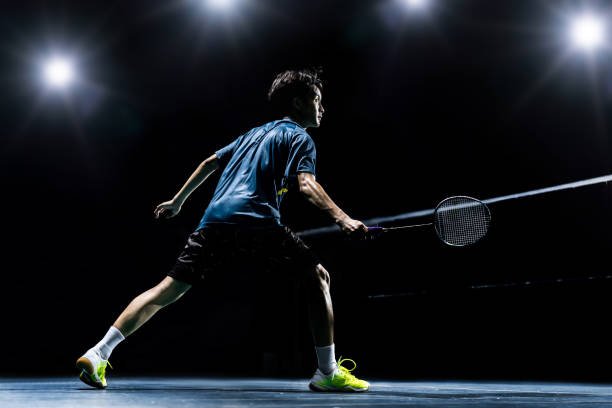If you've ever wanted to expand your arsenal of badminton serve techniques, you're certainly not alone.
After all, mastering a wider variety of serves not only makes your game less predictable but also enables you to tailor your strategy based on each opponent's playing style. But with so many techniques to choose from, which ones should you focus on? And how can you leverage these serves to gain the upper hand during crucial moments in a match?
In this article, we'll dive into the four key badminton serve types that every player should master, along with insights on when and how to use them effectively. Whether you're a beginner looking to build your skill set or an advanced player seeking to refine your technique, understanding these serves will give you the flexibility to adjust your game and stay ahead of your opponent. Let's explore the essential serves you need to know.
In badminton, serving is not only the starting point of each rally but also a crucial opportunity to control the pace of the game and disrupt your opponent’s rhythm. A well-executed serve can create early advantages, and mastering a variety of serve techniques will make you less predictable and more difficult to counter. Here are four essential badminton serve types that can help you dominate your opponent from the very first shot.
1. Short Serve

The short serve is one of the most fundamental and widely used techniques in badminton. Its low trajectory forces the shuttlecock to land just past the short service line, making it difficult for the opponent to react quickly. This serve effectively limits your opponent's attacking opportunities and can often be used to set up a tactical advantage in the early stages of the rally.
Execution:
- Grip: Use a backhand grip, with the thumb placed along the back of the racket handle for control.
- Stance and Preparation: Stand near the center of the service box, knees slightly bent, and body slightly leaning forward to prepare for a quick, short serve.
- Action: Hold the shuttle with your non-racket hand, placing it just above the racket. Position the racket head at a slight downward angle, almost parallel to the floor. Use a short and controlled flick of the wrist to send the shuttlecock just over the opponent's service line.
Tactical Use:
- Limiting Opponent’s Attack: The short serve is particularly effective against opponents who prefer to attack with powerful returns. It restricts their movement and forces them to play a defensive shot.
- Maintaining the Initiative: When executed well, the short serve allows you to immediately take control of the rally, forcing the opponent into a position where they can’t easily retaliate.
- Defensive Play: It is an excellent option when playing against aggressive opponents, as it reduces the risk of counterattacks.
2. High Serve

The high serve is characterized by a high, deep trajectory that travels to the back of the opponent's court. This serve is designed to push the opponent to the back of the court, giving you more time to prepare for the next shot. A well-executed high serve can also end with a steep descent, making it harder for the opponent to return.
Execution:
- Stance and Preparation: Position yourself in the center of the service box. Your non-racket foot should be slightly forward, with your racket foot behind and slightly angled.
- Grip: Use a forehand grip for maximum power and control.
- Action: Hold the shuttlecock in your non-racket hand, then perform a full overhead swing, bringing your racket behind your body. Throw the shuttlecock slightly upward and forward and follow through with a smooth motion, sending the shuttlecock high and deep into the opponent’s backcourt.
Tactical Use:
- Forcing Opponent Back: The high serve is ideal for pushing your opponent to the back of the court, creating more space for you to attack or maneuver.
- Challenging Opponent’s Return: A high serve with a steep trajectory can make it difficult for your opponent to execute an effective return, particularly if they are positioned too close to the net.
- Used Against Aggressive Opponents: It’s a great choice when facing an opponent who is quick at intercepting short serves or attempting early attacks.
3. Flick Serve

The flick serve is a deceptive and fast-paced technique that can catch your opponent off guard. Unlike the short serve, the flick serve is fast and travels a longer distance, forcing the opponent to move quickly and anticipate a different return. It is an effective weapon when you want to break the opponent’s rhythm or surprise them with a sudden change in pace.
Execution:
- Grip: Start with a backhand grip, holding the shuttlecock slightly below the racket’s head.
- Stance and Preparation: Stand closer to the front of the service box, near the center line. The non-racket hand holds the shuttle, with the shuttle tilted slightly downward.
- Action: Similar to the short serve, begin with a short backswing, but at the last moment, flick the racket with extra speed and power to propel the shuttlecock deep into the opponent’s backcourt.
Tactical Use:
- Breaking the Opponent’s Expectation: The flick serve is best used when your opponent is expecting a short serve. It disrupts their anticipation, forcing them to adjust quickly.
- Creating Space for Attack: The fast trajectory and longer distance of the flick serve can push your opponent back, leaving them vulnerable to a follow-up attack.
- Variety in Serving: Incorporating the flick serve adds variety to your service game, keeping your opponent guessing and on their toes.
4. Drive Serve
The drive serve is a flat and fast serve that is primarily used in doubles play. Unlike the high or short serve, the drive serve travels in a straight line with minimal arc, making it a more aggressive choice. This serve is fast and direct, aiming to quickly penetrate the opponent’s defenses.
Execution:
- Stance and Preparation: Stand with your feet shoulder-width apart, ensuring a quick adjustment for the fast delivery.
- Grip: You can use either a backhand or forehand grip depending on your preference and the direction of the serve.
- Action: The drive serve is executed with a short, powerful flick of the wrist. Rather than swinging the racket in a large arc, use a fast, compact motion to direct the shuttlecock at a flat, fast trajectory into the opponent’s service box.
Tactical Use:
- Quick Offensive Play: The drive serve is particularly effective in doubles, where it can surprise your opponents with its speed, forcing them to react quickly.
- Penetrating the Defense: Since the shuttle travels fast and low, it’s a useful technique to break through an opponent’s defensive formation, especially when they expect a slower, more typical serve.
- Good Against Short Serve Predictors: When your opponents are anticipating a short serve, a drive serve can be a perfect way to catch them off-guard.
Conclusion
Mastering these four fundamental badminton serves—short serve, high serve, flick serve, and drive serve—will give you a tactical advantage by adding variety and unpredictability to your game. A well-timed serve can force your opponent into an awkward position, limit their options, and set you up for a successful rally. Whether you're playing singles or doubles, a diverse serving strategy will keep your opponents guessing and give you the upper hand. By practicing these techniques, you will improve not only your serve but also your overall game strategy, making you a more versatile and unpredictable player.